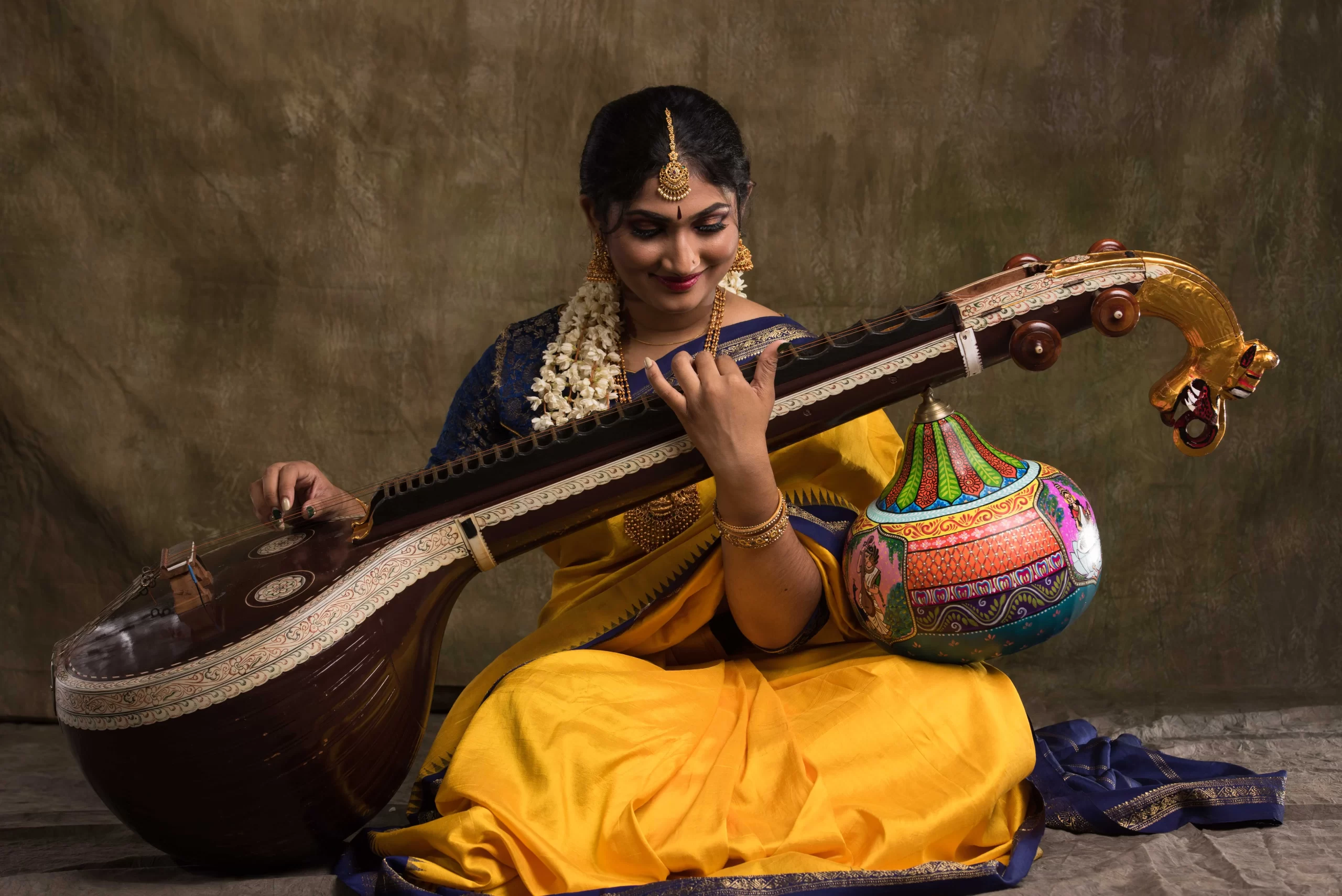Veena
Plucked Instruments
Asia
Ancient
Video
The veena is a revered string instrument from India, deeply intertwined with the country’s classical music traditions, particularly Carnatic music. Known for its rich tonal quality and spiritual significance, the veena is a symbol of Indian cultural heritage and artistic mastery. Its origins date back over 3,000 years, making it one of the oldest continuously played instruments in the world.
Structure and Design
The veena’s structure is as intricate as its music, reflecting centuries of refinement and cultural aesthetics. It is crafted from jackwood or teak and spans a length of approximately 130-150 cm. The instrument is designed for both tonal depth and aesthetic beauty.
- Body: A hollow wooden body supports the strings, with a flat resonating surface. The two resonators, one at each end, enhance its acoustic properties, providing a deep, resonant sound.
- Strings: The veena features seven strings: four main melody strings and three auxiliary drone strings, tuned to a specific raga (melodic framework).
- Frets: Twenty-four brass frets are meticulously set into a wax-and-charcoal base, enabling precise tonal articulation and ornamentation.
- Weight: The veena typically weighs between 7 and 10 kilograms, making it a substantial instrument both physically and musically.
Playing Technique
Mastering the veena requires dedication and skill. Players sit cross-legged on the floor, with the instrument resting diagonally across their laps. The left hand presses the strings against the frets to produce specific notes, while the right hand plucks the strings using a mizrab (small plectrum).
Techniques include:
- Meend: Gliding between notes to create smooth transitions.
- Gamakas: Intricate ornamentations that add depth and emotion to the music.
- Complex Rhythmic Patterns: Syncopated plucking and striking techniques bring rhythmic richness to compositions.
Cultural Significance
The veena holds a sacred status in Indian culture. It is associated with Saraswati, the Hindu goddess of learning and music, often depicted holding the instrument. In Carnatic classical music, the veena is celebrated for its ability to express the subtleties of Indian ragas with unparalleled depth.
Its uses extend beyond concerts to temple rituals and devotional music, reinforcing its spiritual significance. As one of the most challenging instruments to master, the veena is considered a mark of musical virtuosity and devotion.
Unique Characteristics
Several features make the veena distinct:
- Curved Frets: Allow intricate pitch modulation, enhancing melodic fluidity.
- Curved String Ends: Facilitate controlled tension for nuanced sound production.
- Decorative Motifs: Often adorned with intricate carvings and traditional designs, showcasing Indian artistry.
Conclusion
The veena embodies the rich musical and spiritual traditions of India. From its intricate craftsmanship to its profound sonic capabilities, it represents a unique blend of artistic excellence and cultural heritage. As a cornerstone of Carnatic music, the veena continues to inspire and captivate audiences, remaining a timeless symbol of Indian classical music.
FAQ
What is the veena made of?
The veena is traditionally made from jackwood or teak, with brass frets and strings. Its resonators may be crafted from wood or gourds.
How is the veena played?
The veena is played while sitting cross-legged, with the instrument resting diagonally. The left hand presses the strings on the frets, and the right hand plucks the strings with a mizrab.
What is the cultural significance of the veena?
The veena is associated with Saraswati, the Hindu goddess of music and learning. It plays a vital role in Carnatic music and temple rituals.
How many strings does a veena have?
The veena has seven strings: four for melody and three for drones.
Why is the veena considered difficult to play?
The veena's complexity lies in its intricate techniques, such as gamakas and meend, which require precise control and years of practice to master.
 Links
Links
References
Other Instrument
Categories


















